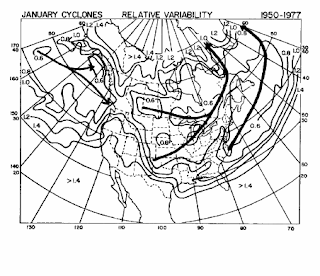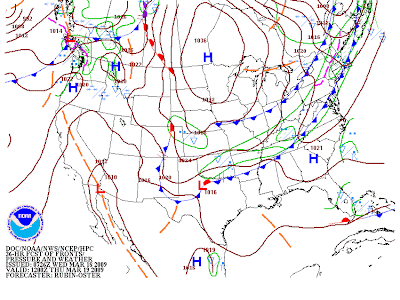Given that water boils at 100 C (212 F) and that no place on Earth ever reaches that temperature under normal atmospheric conditions, an astute student might ask why there is any water vapor in the atmosphere at all? The answer is that just because the oceans don't boil, doesn;t mean there is no evaporation going on.

To picture and understand why, consider a "dry" atmosphere (without water vapor) above a warm tropical ocean at 300 K (27 C or 90 F) . Random motions will result in collisions between water molecules and with air molecules. There will always be some water molecules that pick up enough energy from these collisions to escape into the atmosphere. In other words, these water molecules
evaporate, and the number of water molecules in the atmosphere increases, adding to the atmosphere's humidity.

At a certain point, because the energy of the system is limited, a number of water molecules in the atmosphere will begin to lose enough energy to
condense back to liquid form. If condensation occurs in the atmosphere, falling
precipitation will return the water to the ocean surface. Eventually, the atmosphere-ocean system reaches an
equilibrium, where evaporation is balanced by condensation and precipitation
. Here, the the atmosphere will become
saturated with respect to water vapor, unable to sustain more water molecules. This balance occurs in the marine boundary layer, a small humid layer above the ocean or large body of water. Ascending updrafts are required to remove humidity from this layer to moisten the layer above the marine layer.

Adding heat to the system and increasing the temperature of the ocean (and atmosphere) to 305 K changes the equilibrium. With more energy, more water molecules will escape the ocean into the marine boundary layer, increasing evaporation. The number of water molecules in the marine boundary layer will increase. Because energy is still limited, precipitation and condensation increase to maintain a new equilibrium. Warmer temepratures mean a more active water cycle.

 At 0Z 28
At 0Z 28  April (Fig. 1) a warm front was slowly approaching from the west as soutwesterly winds brought warm, dry air from the southwestern desert states across New York State and into Canada.
April (Fig. 1) a warm front was slowly approaching from the west as soutwesterly winds brought warm, dry air from the southwestern desert states across New York State and into Canada.









































